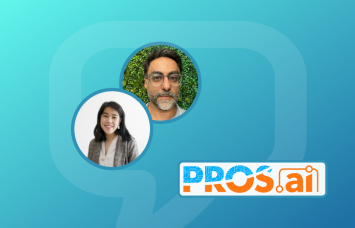
Amy Espinosa of World IA Day
World Information Architecture Day, now in its sixth year, is taking place this Saturday at over 50 locations across five continents. The distributed conference subsists on the efforts of a small army of volunteer IA professionals, from local speakers and organizers to the global leadership team. Last March, in preparation for the 2017 event, the WIAD organization named Tampa-based information architect and consultant Amy Espinosa to the rotating position of Global Executive Producer.
One of the responsibilities of Amy’s role this past year has been to oversee the development of an updated WIAD website. We spoke to Amy earlier this month about the website project’s goals and challenges: leveraging a limited budget and a distributed team to enable smarter content, prioritize accessibility, and implement sound IA for an IA-savvy audience, all while laying a foundation for an even bigger and better celebration next year and beyond.
The Distributed Team
For an organization responsible for coordinating 58 simultaneous events comprising hundreds of speakers and thousands of attendees, the WAID2017 global team is admirably lean, at just 13 people. Of these 13, three contributed to this year’s website project: Samantha Raddatz, along with Amy, handled the IA, and Whitney Quesenbery lent her expertise to making the site more accessible for people who experience disabilities. Also along for the ride was a vendor—the team’s web development firm—responsible for implementing the results of their design and architecture work.
With Amy in Tampa, Sam and Whitney in New York City, and the vendor in the UK, getting the team together to spitball ideas at the local coffee shop was out of the question. Instead, they relied on email, Google Docs and Hangouts, and Axure RP with Axure Share to swap ideas, refine designs, and build and deliver specifications to their developer.
New Engine, Same Hood
One goal Amy specifically did not have for this year’s site: a new look and feel. “Our current website was rebuilt for WIAD2016 and was something I inherited,” she told us. The visual and UX design choices still felt sound, so there was no reason to overhaul them on a tight timeline with limited budget and staff.
Under the hood, however, the 2016 site needed some attention before it could be repurposed. Amy knew this first-hand: “As an organizer for 2016 [for the Tampa WIAD celebration] I ran into many challenges, as did others. Before we launched this year’s instance, I reviewed the feedback from our location organizers last year and planned to make modifications to improve the website to better serve their needs.” As Amy and Sam evaluated and ranked priorities, a shortlist of goals emerged:
- A better way for local affiliates to add content to location pages (for reference, here’s last year’s versus this year’s New York City location page)
- An easier way for visitors to the site to access live streams
- A content archive page, collecting live streams and other content for posterity
- Level AA conformance to the W3C’s Web Content Accessibility Guidelines
Though the site’s home page as well as its overall look and feel throughout would remain largely unchanged from the 2016 edition, significant work was needed in the areas of IA, accessibility evaluation and testing, and “middle-end” web development—to drive location pages via database—in order to make the site more usable and useful for organizers and visitors. (Ed note: We’ll be looking at the WIAD team’s accessibility work in more detail in an Axure blog feature later this year dedicated to accessibility and prototyping.)
Deadlines and Data Models
Amy and the team began their work with a focus on the site’s location pages. “We wanted to make it much easier for organizers to add content to their location pages. Last year, what they got [in the CMS backend] was a giant text box with very little support for formatting. We reviewed content on every location page from 2016 and looked at the patterns of common information added. We designed a screen that broke out things like Venue, Sponsors, Speakers, Local Team—and then gave organizers the ability to create individual program items organized by time. This was a baby step to start creating a different data model so we could eventually create relationships between sections. For example, Speakers could eventually be linked to a program item, and Local Team could eventually be something location organizers could add themselves.”
The team’s process favored tools geared toward distributed collaboration. “We first planned the changes using Axure. Once finalized, they were shared using Axure Share and Google Docs. We had a few meetings via Hangouts and chatted via email regarding questions, constraints and timeline.”
“[Axure RP and Axure Share] helped me communicate proposed changes and gave us a visual tool to start discussing concepts. Once the ideas were understood, the vendor defaulted back to their own methods and processes. Axure RP also helped document some of the work we have done, not only on the website, but also for our guidebook [for future WIAD organizers] and call-for-locations process flow.”
Axure RP and Axure Share helped me communicate proposed changes and gave us a visual tool to start discussing concepts. Once the ideas were understood, our developers defaulted back to their own methods and processes.
The location page changes were finished in time to debut with the 2017 site, and so far the reception from organizers has been positive. Other planned changes, such as the dedicated live-streaming page and content archive, will have to wait until next year.
“We had a limited budget to work with and needed to plan to make incremental changes that would move us closer to our long term goals,” Amy told us. “While we haven’t been able to make all of the changes we wanted this year, we’ve done some of the hard work to make them a reality for 2018. We’ll start building our live-streaming page and content archive in April.”
Architecting the Future
Regarding the work left to do, Amy is pragmatic. “Much of Sam’s and my focus this year was to strengthen the foundation so that the work would be easier to manage as World IA Day grows. I think we have done some great work that will enable our successors to hit the ground running and give them more time to set and achieve more IA-oriented objectives while still serving our community with the annual tasks that need to be done. My hope is to have accomplished the task of getting things in order so knowledge is not lost and the transition annually is smooth.”
We asked whether doing IA was different when the audience was particularly IA-savvy. Would the work be held to a higher standard? Would any judgement perhaps be harsher? Quite the opposite, it turns out. “Many of the things Sam and I did this year were based on the suggestions of our organizers. We have a very collaborative and supportive community. And the beauty of our community is that people appreciate your effort no matter what. World IA Day is completely run by volunteers so they know that [the global team] care and that we’re trying our best. They never call you out for mistakes, and believe me I have made many. Instead they are just supportive and offer suggestions and kindness.”
If you’d like to become a part of the (collaborative and supportive) World IA Day community, consider hosting a WIAD2018 celebration in your own city. Amy tells us that the application period for next year will be opening this coming May or June. And if you live in a city that is already one of the WIAD locations for this year, getting involved is even easier—just head on down to your local event this weekend.


